KDM transformer enclosure is ideal for protecting electrical and electronic components against ingress of potential hazards. These cabinets can prevent moisture, dust, liquids, and other tools from harming the component.
Our cabinets are available in a variety of dimensions, colors, and designs. With that, you can find the exact product for your need. Every unit is also manufactured and fabricated from different high-grade materials. When choosing a unit, you must consider the area and other main factors where it is installed.
Also, every model comes with a level of protection. For any thermal and power management solution, count on KDM. This transformer enclosure can be custom-built to fit specifically where it should be installed.
- Competitive price transformer enclosures controlled by our professional customer service team
- Wide range of transformer enclosures ideal for protecting electrical components
- Powerful and Easy to Use transformer enclosures,
- Transformer Enclosures 100% customizable
KDM Transformer Enclosure Series
KDM power transformer enclosure can be suited for industrial, commercial, and residential applications. For any particular need, we can manufacture components to meet your special requirement.
The 3-phase transformer enclosure is constructed with sturdy, reliable material and tools. We have a complete line of this product, maximizing unit performance effectively.
Find heavy-duty ventilated transformer enclosure delivers extra strength and greater reliability of the system. Unit is suitable to use for indoor and outdoor applications.
This100kva transformer enclosure is an ideal use for a wide range of applications and businesses. It provides a level of protection to the device and wiring.
Our industrial transformer enclosure is made up of rigid, sturdy material. Effectively protect components against hazardous environmental elements.
KDM designed a transformer enclosure that is NEMA-rated. This cabinet can be applied for a variety of uses. We can fabricate in a variety of materials, types, and feature options.
Send your Inquiry on KDM Transformer Enclosure
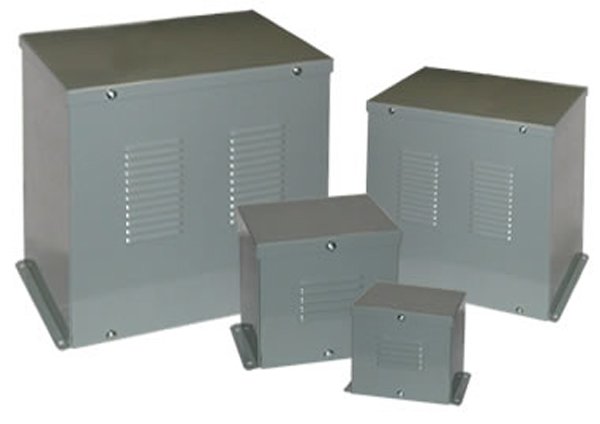

By adapting our cabinet to the required depth, height, and width, and other main factors, we can completely design new, unique panels for you. Furthermore, we can add or install optional accessories to make the enclosed components extra-safe and secured. You can reduce noisy equipment and other hindrances with type-tested transformer panels.
These panels are highly efficient at a minimal frequency and critical frequencies. In KDM, our enclosures are very powerful and reliable, perfectly chosen in the most demanding application.
- Each enclosure is tested and approved various standard quality parameters
- Add-on features and accessories, optional
- Compact and less maintenance to suit the requirements of each project
- Tailored-made enclosure based on your design
Related Product with Transformer Enclosure
KDM Transformer Enclosure
Complete your project and operational equipment, with superior quality and ultra-durable transformer enclosures.
Make every operation flawlessly enhance the system and roof your equipment efficiently.
The transformer enclosure is manufactured in our own factory.

Due to that, we can entirely control the quality systems in every process of production.
Unit is built to withstand for longer years, design high-performance application, according to your needs.
Tested and approved in our lab with a professional QC team.
Components meet the durability requirements of the most rigorous industry standards.
KDM has the expertise to design and develop superior performance and high-quality enclosures.
With more than 10 years of experience, we had dealt thousands of customers, they can confirm our trustworthiness.
Our transformer enclosure is available in different types including 480v transformer panel, 3-phase transformer enclosure, 100kva transformer enclosure, and more others.
Structure flexibility design and consistency allow withstanding the harshest weather conditions.
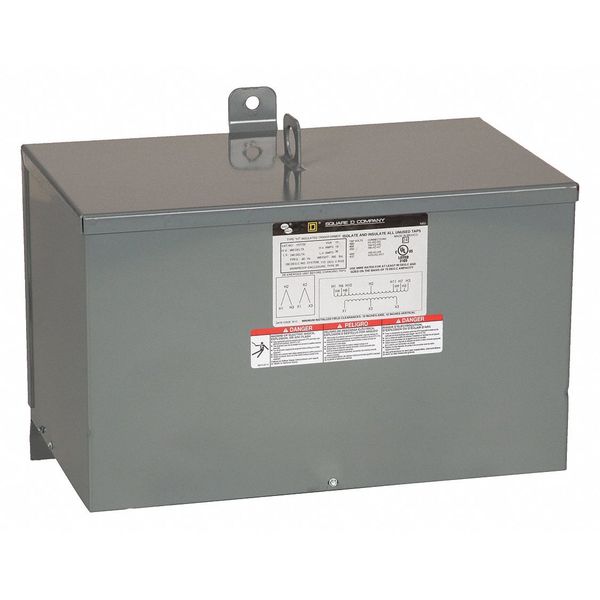
Also, this is suitable use in indoor applications. Panel not only protects the sensitive equipment but also prevents all the workers around from dangerous and critical part exposure.
The panel is designed and constructed in a variety of equipment- industrial, commercial, and utility.
Our expert and dedicated team of experts designed and engineered every part of a panel to the best mounting and enclosure choices.
KDM is your all-in-one source for all kinds of transformer enclosure requirements.
No doubt, we had deal amongst the customers.
Whether they need for business, commercial, or special needs, we have a solution for you.
Our high-capacity plant and equipment will allow you to achieve order in very fast, short delivery times.
Save cost, installation fee, and reduce time with KDM services.
We can deliver the appropriate cabinet for your unit in order to maximize system performance.
As one of the industry professionals, KDM will offer a complete solution for you.
For orders, please contact us right away!
Transformer Enclosure – The Complete FAQ Guide
The complexity of electronic supply is the main reason why humanity utilizes a wide array of special equipment and devices.
Among such items, various transformers come in mind practically in the first place due to the widespreadness of tasks that they solve.
Just like any other expensive electrical equipment, transformers require certain means of protection, including the use of special cabinets or enclosures.
Without further ado, let’s have a look at the topic of transformer enclosures.

- What Is A Transformer Enclosure?
- What Is A Transformer And How Does It Work?
- How Many Types Of Transformers Are There?
- What Kind Of Transformer Enclosures Can KDM Offer?
- How KDM Enclosures Protect Transformers From Environmental Threats?
- Why Do Transformers Hum? How To Avoid The Excessive Noise?
- Can I Order KDM Enclosure With A Transformer Inside?
- How To Mount Transformer Enclosure?
- What Does The Abbreviation BIL Mean?
- Can You Explain The Lamination Technique?
- How To Differ Insulating, Isolating, And Shielded Winding Transformers?
- What Is Electrical Steel?
- What Is An Electrostatic Shield?
- Where Can I FInd International Standards That Refer To The Transformer Enclosure?
What Is A Transformer Enclosure?
Transformer enclosures are specially made cabinets that are used for mounting transformers and other connected electrical equipment.
Such constructions help to protect transformers from different threats inherent for the environment.
Transformer enclosures are typically made of special materials that do not interrupt electrical processes within the transformer.
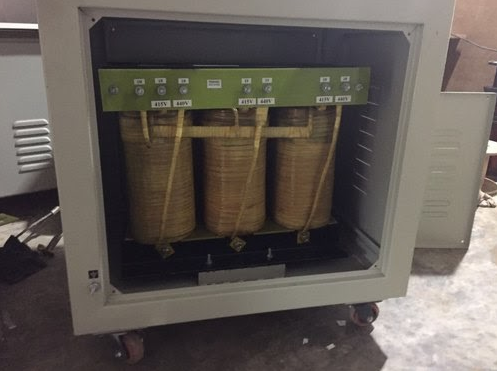
What Is A Transformer And How Does It Work?
A transformer is an electrical device whose main task is to convert alternating current from one voltage to another.
It operates based on the magnetic induction principle.
Speaking in simple language, it is the production of current in a conductor as it moves through a magnetic field.
A magnet produces lines of magnetic force and iron filings align themselves along the invisible lines of flux.
Due to the above-mentioned principle, if you take a wire and move it back and forth in a magnetic field, you cut across the lines of flux.
The magnetic field pushes on electrons in the metal.
Such movement of electrons produces an electrical flow.
As you may assume, a transformer has no moving parts at all.
In fact, it is a completely static solid-state device, which consists, in its simplest form, of two or more coils of insulated wire wound on a laminated steel core.
When voltage is introduced to one coil, called the primary, it magnetizes the iron core.
A voltage is then induced in the other coil, called the secondary or output coil.
The change of voltage (or voltage ratio) between the primary and secondary depends on the turns ratio of the two coils.

How Many Types Of Transformers Are There?
There are a lot of different classifications when it comes to types of transformers.
Based on construction, transformers can be classified into two types;
- Core-type transformer.
- Shell-type transformer.
In a core type transformer, windings are cylindrical former wounds, mounted on the core limbs.
The cylindrical coils have different layers and each layer is insulated from the other.
Materials like paper, cloth, or mica can be used for insulation.
Low voltage windings are placed nearer to the core, as they are easier to insulate.
In the shell-type transformers, the coils are former wound and mounted in layers stacked with insulation between them.
A shell-type transformer may be constructed in a simple rectangular form, or it may have a distributed form.
When it comes to the basis of their purpose, transformers can be divided into two groups:
- Step-up transformer, where voltage increases with a subsequent decrease in current at secondary.
- Step down transformer, where voltage decreases with subsequent increase in current at secondary.
Also, we can name a classification based on the type of supply, where the following transformers appear:
- A Single-phase transformer is a power transformer that utilizes a single-phase alternating current, meaning that it relies on a voltage cycle that operates in a unified time phase.
- A three-phase transformer is a power transformer that produces electricity by rotating three coils or windings through a magnetic field within the generator.
When we are talking about the basis of the transformer used, the next types come to mind:
- The power transformer is typically used in the transmission network and has a high-efficiency rating.
- A distribution transformer is used in the distribution network and has a comparatively lower rating than that of power transformers.
- Instrument transformer is used in relay and protection purposes in different instruments.
Finally, let’s mention some types of transformers figured out based on the cooling mechanism:
- Oil-filled self-cooled type.
- Oil-filled water-cooled type.
- Airblast type (air-cooled).
In fact, there are more types of separate transformers, with which you can become familiar with using the following Wikipedia link.
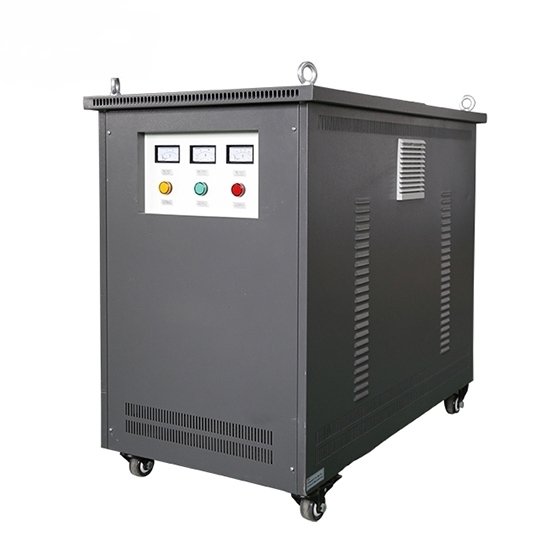
What Kind Of Transformer Enclosures Can KDM Offer?
KDM can produce any kind of transformer enclosures that can be used for various types of transformers mentioned in the previous paragraph.
The following are the most popular items in our catalog.
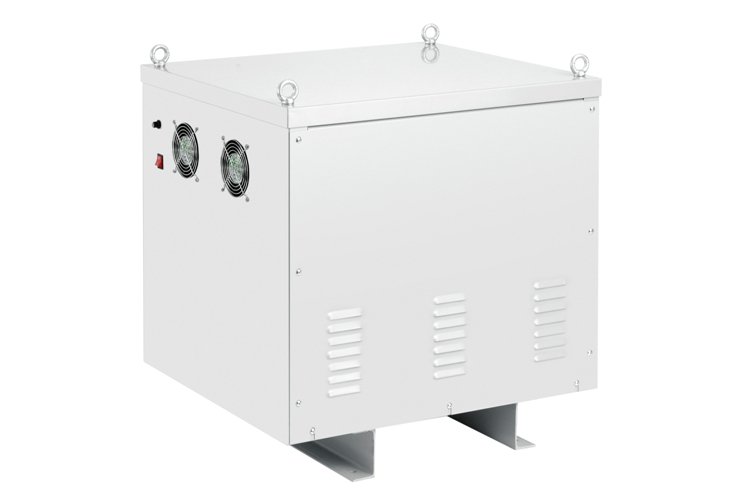
# 1. Power Transformer Enclosure
As it was already mentioned above, power transformers have the highest efficiency rating among other types.
Thus, it is necessary to give them as much protection as possible.
To do so, KDM specialists utilize the most reliable materials and special design solutions, including modern cooling schemes, unique construction, additional protective equipment, and so on.
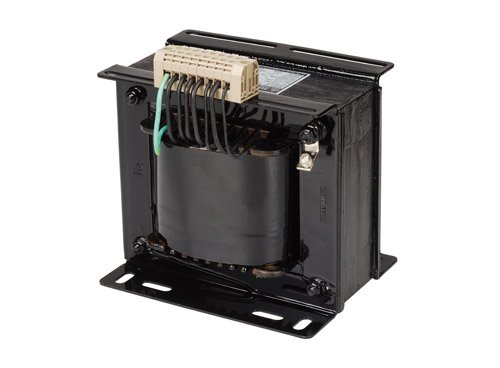
# 2. Single-Phase Transformer Enclosure
Single-phase transformers use a single-phase inside of which a voltage cycle operates creating a needed power supply.
In order to protect vital parts of this mechanism, KDM manufactures transformer enclosures that store such a piece of equipment in the most appropriate way.
For example, we can place the transformer and additional parts on DIN rails to make them unmovable.
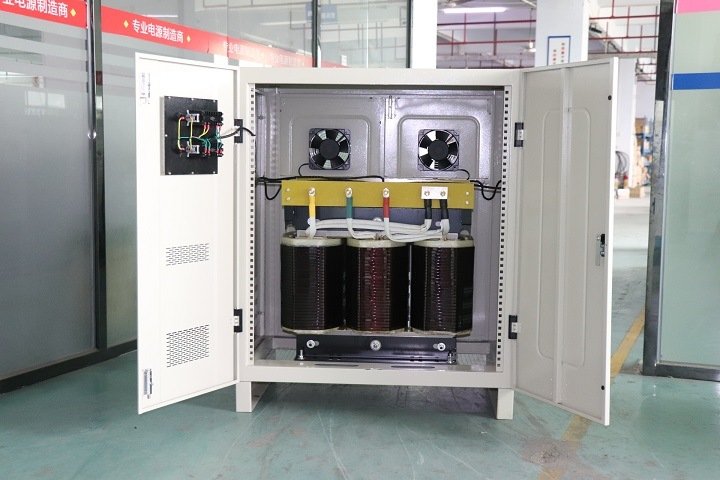
# 3. 3-phase Transformer Enclosure
A three-phase transformer can be manufactured either by using three single-phase transformers together (forming the so-called transformer bank) or by using one ready-made three-phase transformer that consists of three pairs of single-phase windings mounted onto the single laminated core.
The advantages of building a single three-phase transformer are quite obvious: for the same kVA rating, it will be smaller, cheaper and lighter than three individual single-phase transformers connected together because the heaviness of copper and iron core will be reduced.
The methods of connecting the primary and secondary windings are the same for both methods.
KDM considers how important the lightweightness might be for your application, thus constructing the three-phase transformer enclosure most effectively, using modern materials and the above-mentioned method of a single three-phase device.
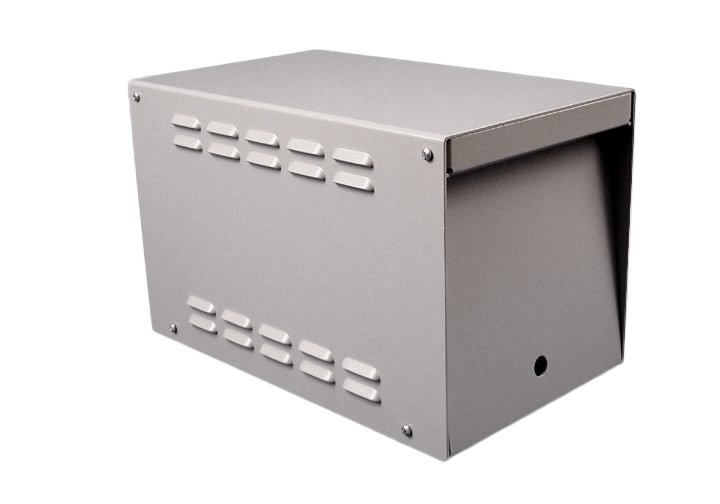
# 4. Ventilated Transformer Enclosure
To make the operation of the transformer even more effective, it is necessary to create the appropriate temperature conditions.
One of the ways lies through the adding of ventilation systems inside the enclosure, using fans, coolers, temperature sensors, etc.
KDM has a wide array of means for temperature control that do not require a lot of energy to operate.

# 5. Non-Ventilated Transformer Enclosure
To make ventilation possible (even natural), you have at least created additional space and holes inside the enclosure.
In some cases, it is impossible, because the holes might serve as an easy pass for water and dust particles to the inner equipment.
Thus, you have to create an enclosure from the right materials to make the heat dissipate by radiating from the surface area.
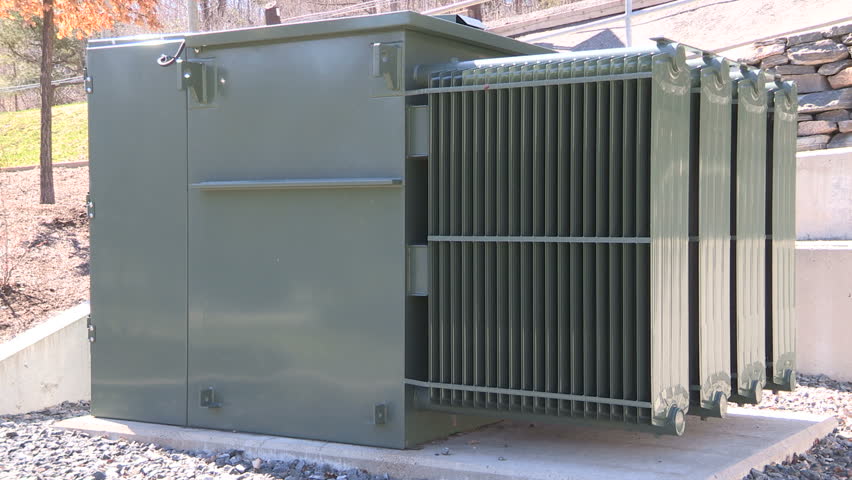
# 6. Industrial Transformer Enclosure
The industrial use of transformers suggests quite harsh and constant working conditions.
Also, industrial transformers will control a lot of electrical power, so it is necessary to understand the high amount of pressure that the inner equipment would achieve.
To make our industrial transformer enclosures able to operate in such harsh conditions, KDM engineers use hi-tech metal and plastic materials, as well as modern cooling systems, locking mechanisms, and other technological solutions that help your equipment work for a long time.

# 7. NEMA Transformer Enclosure
KDM can offer you various NEMA-rated transformer enclosures that can operate in the most dangerous environmental conditions, including heavy rains, dust storms, strong winds, and so on.
When manufacturing such enclosures, you have to follow strict NEMA standards that can be found on the official website of the association.
KDM is glad to offer our customers the most appropriate NEMA items, including enclosures, cabinets, boxes for various electronic devices, including transformers.
Our products go through hard testing procedures and acquire the status of NEMA-rated enclosures only on a legal standardized basis.

# 8. IP-Rated Transformer Enclosure
The IP rating is quite similar to the NEMA rating, so our IP-rated transformer enclosures come through practically the same testing procedures as NEMA-rated cabinets.
However, there are certain differences between these two concepts; you can find them using the following link.

# 9. Small Transformer Enclosure
Not all transformers have a huge size and have to work in harsh industrial conditions.
Also, some transformers can be used as secondary devices in pairs with bigger equipment.
The small size of these transformers, however, doesn’t lead to the conclusion that they have to be protected lesser than others.
Actually, it is harder to produce robust enclosures in this case, because you have to stay within size and weight limits while making the enclosure as secure as possible.
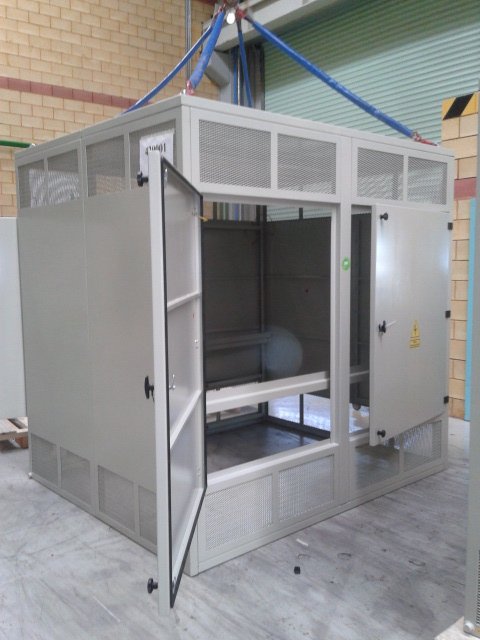
# 10. Dry-Type Transformer Enclosure
Unlike liquid fill transformers, dry-type transformer enclosures have to utilize only environmentally safe, CSA and UL recognized high-temperature insulation systems.
Dry-type transformers provide a safe and reliable power source that does not require fireproof vaults, catch basins or the venting systems to move toxic gasses outside the enclosure.
These important safety factors allow the installation of dry type transformer enclosures inside buildings.
You can put them close to the load, which improves overall system regulation and reduces costly secondary line losses.

# 11. Liquid-Filled Transformer Enclosure
If you are using liquid-filled transformers that are cooled with oil or fire-resistant liquid dielectric, you have to consider a lot of safety factors.
KDM offers the safest enclosures for liquid-filled transformers that have special systems to ventilate gasses and avoid the possibility of fire spread or explosion.

How KDM Enclosures Protect Transformers From Environmental Threats?
As it was already said above, some KDM transformer enclosures are specially designed to protect sensitive equipment from various environmental hazards.
This is especially the case of NEMA and IP-rated cabinets, that can provide the equipment with all the needed security against:
- Dust particles and dirt.
- Water splashes and condensation.
- Corrosion.
- Moisture and its consequences (including fungus, mold, rust, etc.)
- The explosion of gases.
- Strong wind.
- Fire.
- Cold temperatures and excessive ice.
If your future application might be hazardous, it is recommended to figure out what kind of dangers the equipment would be dealing with.
Please, leave us a quote so we can understand what kind of transformer enclosure will be better in your exact case.
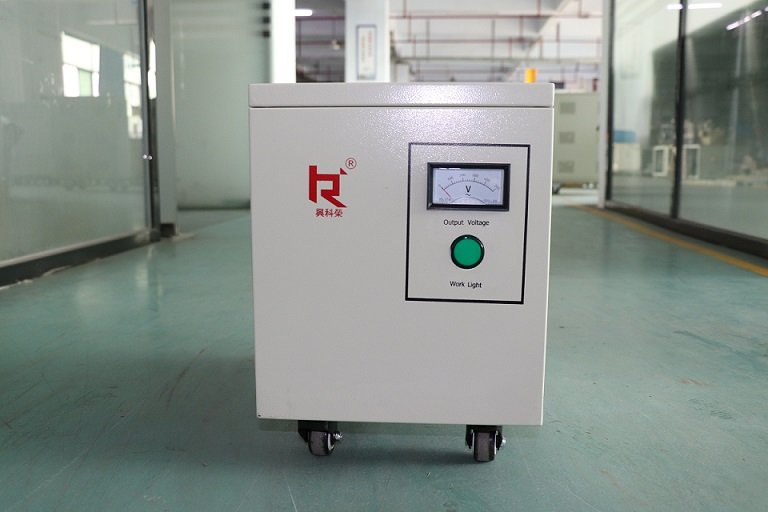
Why Do Transformers Hum? How To Avoid The Excessive Noise?
Electric hum might be quite an annoying thing, especially when you are constantly working near the transformer.
In general, it is caused by stray magnetic fields that affect the enclosure and accessories inside it, making them vibrate.
Magnetostriction is a second source of vibration: in this case, the core iron changes shape minutely when exposed to magnetic fields.
The intensity of the fields, and thus the hum intensity, is a function of the applied voltage.
Because the magnetic flux density is strongest twice every electrical cycle, the fundamental hum frequency will be twice bigger the electrical frequency.
Additional harmonics above 100 Hz or 120 Hz might be created by the non-linear behavior of most common magnetic materials.
Speaking of the neutralization of this hum, it is impossible to avoid this effect completely.
However, some techniques can reduce this noise.
Thus, to avoid the creation of excessive noise, transformer enclosures utilize certain design solutions and special materials, on the inside and outside of the cabinet.
Let’s have a look at the most effective techniques:
# 1. Avoid Corners, Stairways And Corridors
It is not recommended to place your transformer enclosure in a corner of a room or close to the ceiling, because these locations amplify the noise.
Also, you have to avoid the installation of transformers in narrow corridors, halls or stairways.
As with room corners, these areas will cause the sound to build up and be reflected back louder.
# 2. Place The Transformer Enclosure On A Solid Surface
Thin curtain walls or plywood surfaces will also amplify excessive noise, so units should be mounted on dense, heavy surfaces such as reinforced concrete walls or floors.
For the best results, mounting surfaces should weigh ten times as much as the whole unit itself.
# 3. Tightly Fasten All Bolts And Screws On The Transformer Enclosure
When installing your transformer enclosure, be sure to check if all screws are properly tightened.
Loose parts will vibrate when the transformer is running and add to the noise level significantly.
Lifting eyebolts can also increase the noise, so make sure to remove any that were used during installation.
# 4. Use Acoustical Dampening Material
You can reduce some of the noise generated by an electrical transformer by using materials that prevent the sound from spreading.
Covering the walls of the transformer room with absorbent materials such as KIMSUL, acoustical tile or fiberglass is a good way to contain the excessive and hum.
# 5. Use Oil Barriers Or Cushion Padding
Like sound dampening materials, oil barriers and cushion padding may also help insulate transformer noise and prevent it from spreading.
These don’t actually cut down the sound or vibration itself, but help cut down the irritation it causes among people in nearby areas.
# 6. Try Flexible Mounting Techniques
While installing electrical transformers on structural walls, columns, ceilings, or frames, use external vibration dampeners along with flexible connections.
This prevents metal contact between the mounting surface and the unit, and eventually, it reduces the transmission of noise.
# 7. Follow the Manufacturer’s Guidelines
As with other electrical materials, follow the instructions and guidelines provided by the manufacturer.
For instance, if the design includes vibration dampeners between the case and core and coil assembly mounting, the mounting bolts for these have to be removed after installation.
# 8. Select a Low-Traffic Installation Site
If the transformer is located in a crowded area, people might find such a noise irritating, especially if ambient noise is lower than the unit’s sound level.
Make sure there’s at least one low-traffic space between the transformer and high-traffic areas in offices, residential buildings, etc.

Can I Order KDM Enclosure With A Transformer Inside?
KDM is a leading supplier not only of enclosures and cabinets but of connected equipment as well.
Thus, you can select between ordering an empty shell for your transformer or ordering a ready-made system.
We can help you to find any kind of electric device for your exact application.
How To Mount Transformer Enclosure?
There are several popular ways of transformer enclosure mounting.
Let’s start with the most widespread technique – floor mounting.
In this case, the transformer is fastened to the floor or another flat surface in order to avoid moving.
It is a good technique if you are sure that there would be no need to constantly move the transformer.
If such need would arise from time to time, it is better to use the free-standing mounting technique.
Moreover, the free-standing enclosures can be put not only on feet but on wheels as well.
Finally, KDM can offer you transformer enclosures that are wall-mounted or pole-mounted.
There is no real construction difference between these two: such enclosures can be fastened to the wall or pole to exclude the possibility of free access to the equipment and to use the space in the facility more effectively.
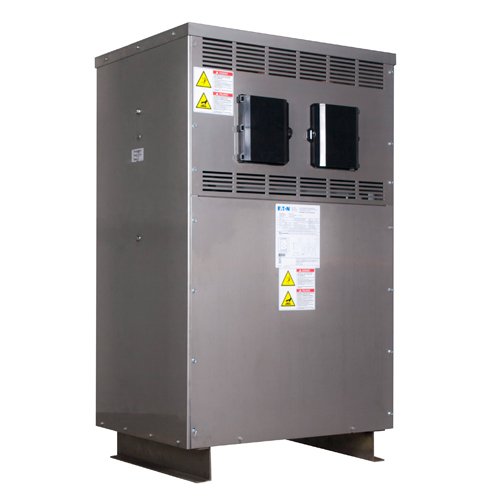
What Does The Abbreviation BIL Mean?
BIL stands for the basic impulse level.
It is a value that expresses the ability of the insulation system to withstand high voltage surges.
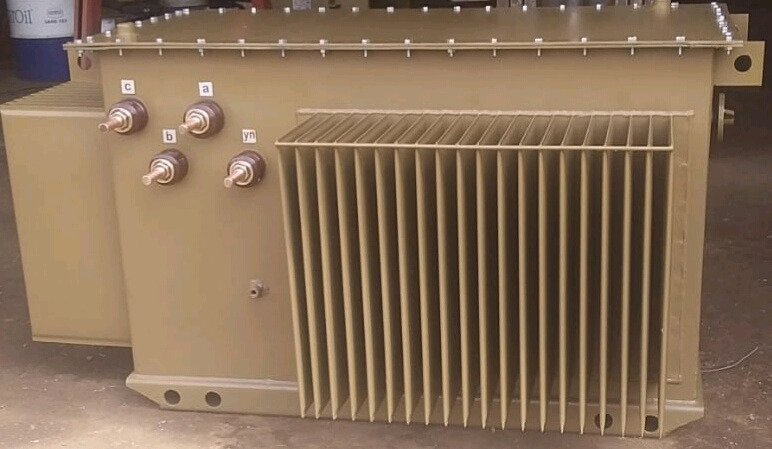
Can You Explain The Lamination Technique?
Lamination is the technique of manufacturing a material in multiple layers so that the composite material achieves improved strength, stability, sound insulation, appearance, or other properties from the use of differing materials.
A laminate is a permanently assembled object by heat, pressure, welding, or adhesives.
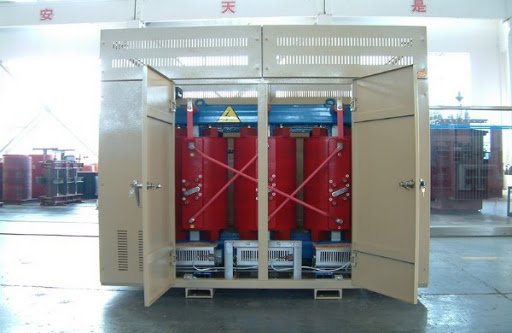
How To Differ Insulating, Isolating, And Shielded Winding Transformers?
Insulating and isolating transformers are the same thing.
These two terms are used to describe the isolation of the primary and secondary windings or insulation between these two.
A shielded transformer is a type designed with a special metallic shield between the primary and secondary windings to attenuate transient noise.
This is especially important in critical applications such as computers, process controllers, and many other microprocessor-controlled devices.
All two, three, and four winding transformers are of the insulating or isolating types.
Only autotransformers, whose primary and secondary are connected to each other electrically, are not of the insulating or isolating types.

What Is Electrical Steel?
Electrical steel is a soft magnetic material with enhanced electrical properties.
It is generally used across applications such as small relays, solenoids, electric motors, generators, transformers, etc.
Electrical steel is also referred to as silicon steel, transformer steel, or laminated steel.
Such steel is typically made by adding silicon to iron.
Needless to say that it greatly improves the physical properties of electrical steel.
This special type of steel has the following useful properties for supporting the generation, distribution, and consumption of electricity:
- High permeability (increased capacity to support magnetic fields).
- Low magnetostriction (low tendency to expand or contract in magnetic fields).
- High electrical resistivity (lessens the core loss by reducing the eddy current component).
- Decreased hysteresis loss (low hysteresis loss means less wasted energy in the form of heat from alternating magnetizing force).
There are several types of electrical steel, as described below.
# 1. Non-Oriented Fully Processed Electrical Steel
Non-oriented, fully processed electrical steel has varying silicon levels in the amount from 0.5% to 3.25%.
It has great magnetic properties if you look at each aspect.
First of all, this type of electrical steel does not require recrystallization processes to develop its properties.
The low silicon alloy grades provide better magnetic permeability and thermal conductivity.
Secondly, for high alloy grades, better performance is expected in high frequencies, with very low losses.
Due to the aforesaid properties, non-oriented, fully processed electrical steel is excellent for magnetic circuits in transformers, motors, and electrical system housing.
However, this fully processed type provides difficulty while performing a punching technique due to a completed annealing process.
In most cases, the organic coating is applied to improve lubrication in the punching process.
# 2. Non-oriented semi-processed electrical steel
Non-oriented semi-processed electrical steel is non-silicon alloyed steel that is tempered at low temperatures after the final cold rolling.
The punch ability of this electrical steel type is better than the non-oriented fully processed type, so organic coatings are not required.
Non-oriented semi-processed grades are good core materials for compact power transformers, rotors, stators, and other small electrical equipment.
# 3. Grain-oriented electrical steel
Grain-oriented electrical steels are composed of iron with 3% of silicon content.
It is called grain-oriented steel because it also contains grains to deliver high permeability and low energy loss.
Grain-oriented types of steel have strong crystallographic properties.
Such a material undergoes a recrystallization process resulting in an enhanced grain structure that exhibits better magnetic properties in the rolling direction of the sheet.
Grain-oriented steels are mostly used for non-rotating applications, such as transformers.
Note: KDM uses all of the above-mentioned materials while manufacturing transformer enclosures to guarantee their effective and long-lasting operation.
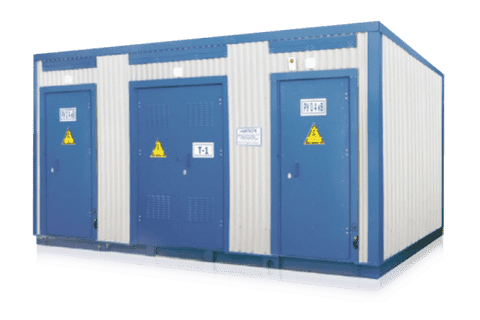
What Is An Electrostatic Shield?
Electrostatic shielding is the phenomenon of protecting a certain region of space from the external electric field.
The electric field inside a conductor is zero.
Therefore to protect delicate instruments from the external electric field, we enclose them in hollow electric fields and a hollow conductor.
In a thunderstorm accompanied by lightning, it is safer to be inside a car or a bus than to be in the open ground or under a tree.
No electrostatic potential is constant throughout the volume of the conductor and has the same values as on its surface.

Where Can I FInd International Standards That Refer To The Transformer Enclosure?
First of all, you should be familiar with standards created by the UL (an abbreviation for the Underwriters Laboratories).
They have certain documents that contain strict rules for operation and testing procedures for transformers and their enclosures.
If you are interested in such documents, please follow the next links (Low and Medium Voltage Transformers Testing and Certification, Standard for Transformers and Motor Transformers for Use in Audio-, Radio-, and Television-Type Appliances).
Secondly, let’s not forget about the IEC (International Electrotechnical Commission) standards.
They have a lot of documents that speak of transformers, including standards for power transformers and their enclosures.












